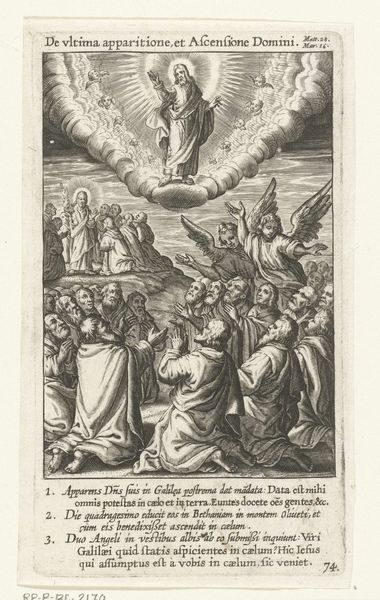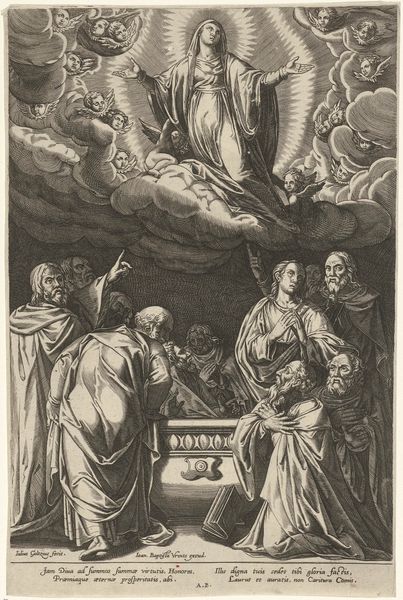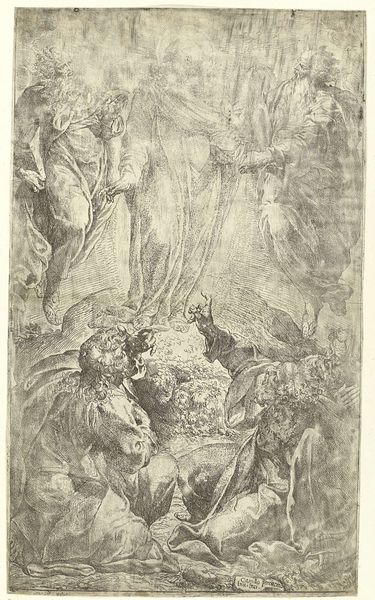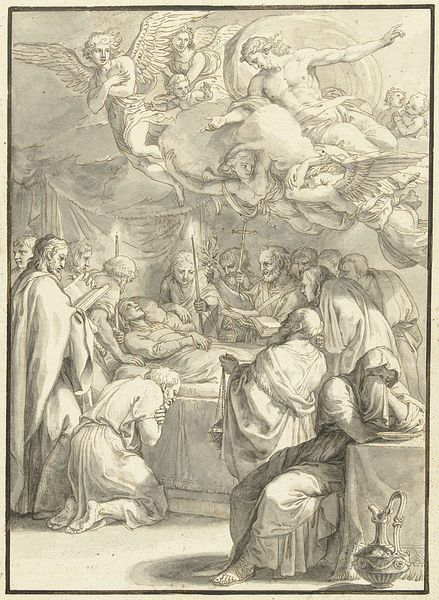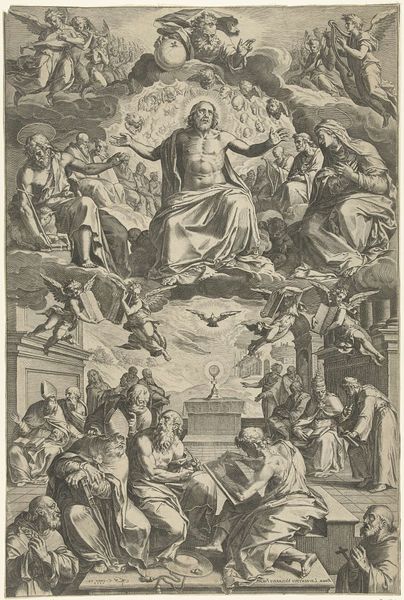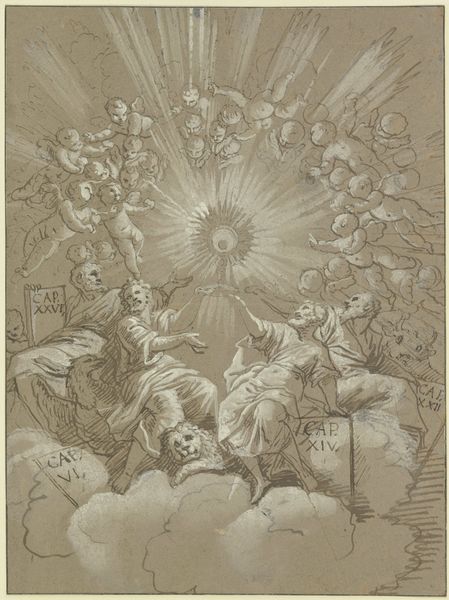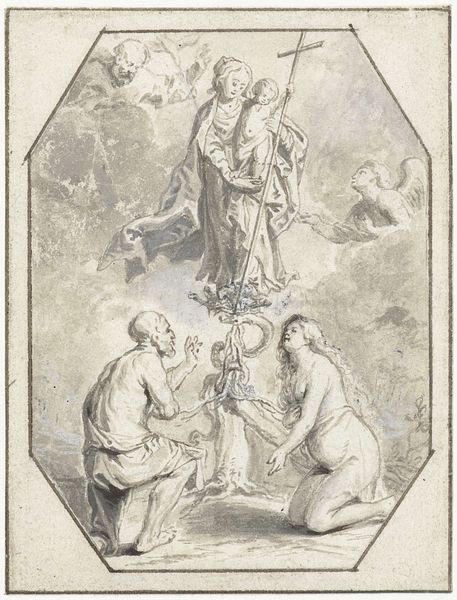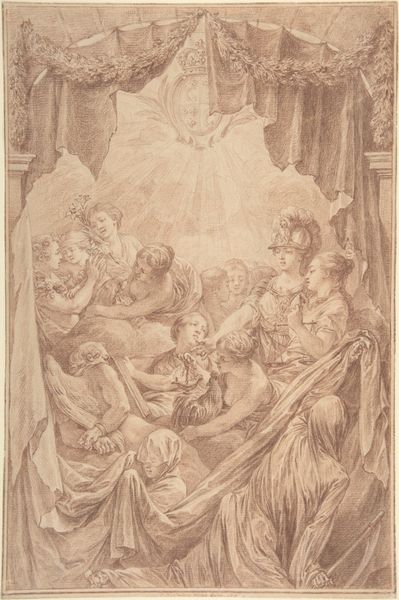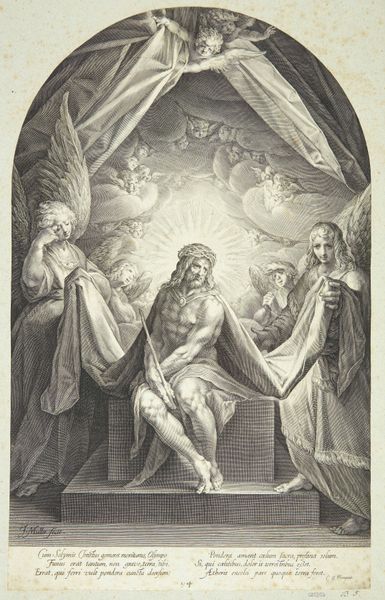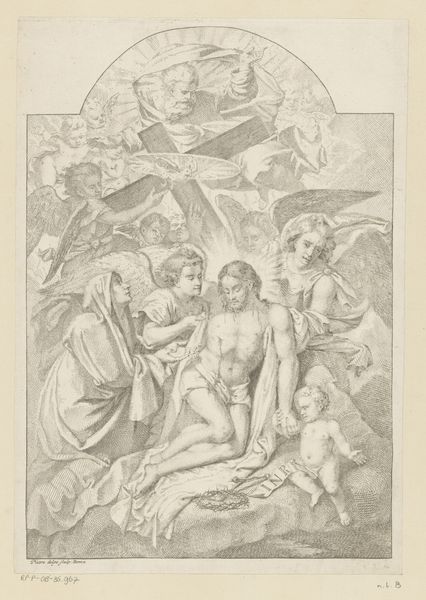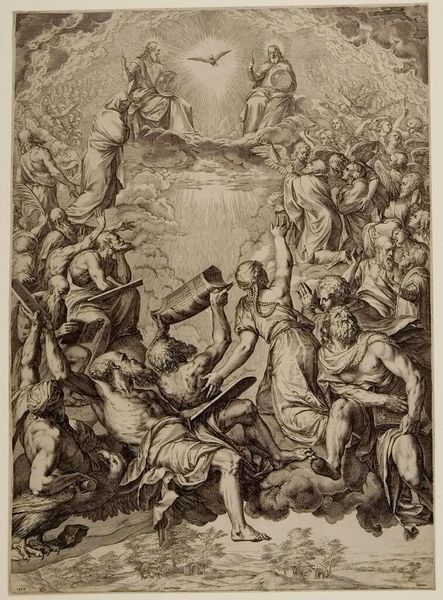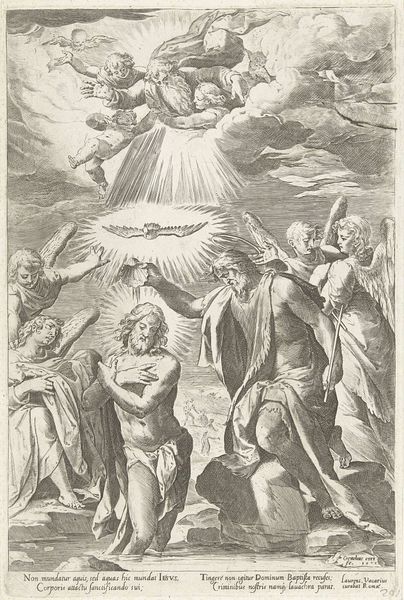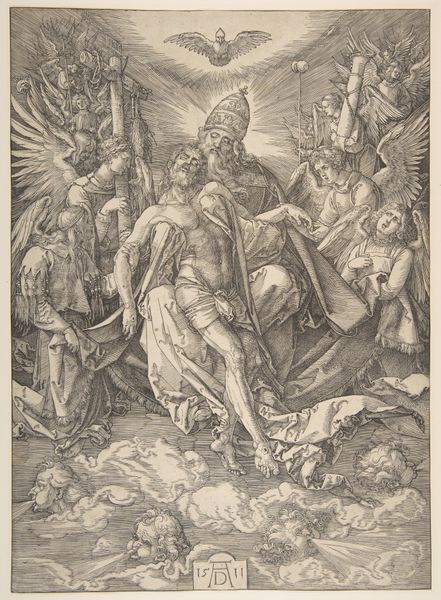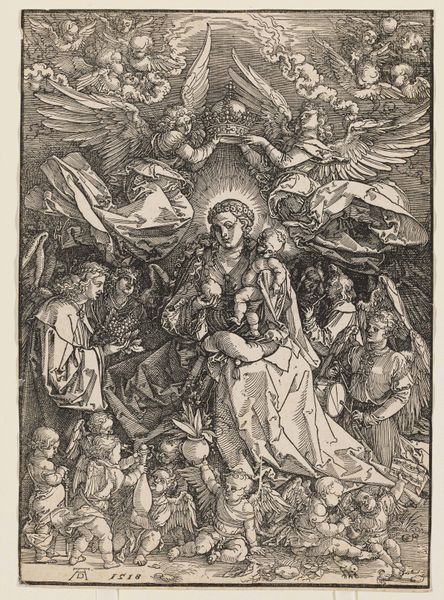
drawing, ink, pencil
drawing
ink drawing
pen sketch
pencil sketch
figuration
11_renaissance
ink
pencil drawing
pencil
history-painting
Dimensions: height 317 mm, width 191 mm
Copyright: Rijks Museum: Open Domain
Editor: This is Pieter de Jode I's "Sleuteloverdracht," created sometime between 1615 and 1634. It's an ink and pencil drawing. The composition feels very layered, almost like a tapestry of figures and symbols. What strikes you most about its visual construction? Curator: The dominant feature, undoubtedly, is the arch-like format, dictating the placement of the figures and the implied heavenly sphere. Note how the artist uses line weight to differentiate the divine realm—the Holy Trinity, rendered ethereally in the upper register—from the corporeal world depicted below. Observe also the calculated placement of figures. What compositional relationships do you discern? Editor: Well, the figures are grouped to either side, leading toward a central exchange...a kneeling figure presents keys. I’m curious about how this action guides our reading of the scene. Curator: Precisely! This transaction creates a visual axis. The keys, rendered with meticulous detail, become a pivotal point around which the narrative unfolds. Notice the subtle gradations of light and shadow achieved through the varying density of lines. Consider how this technique shapes our understanding of depth and volume within the essentially two-dimensional space. What implications might this technique have in understanding the intention of the piece? Editor: I see what you mean. The darker lines pull the figures forward, emphasizing the symbolic exchange. I guess, even without knowing the exact narrative, the formal qualities create a clear focal point and hierarchy. Curator: Indeed. De Jode’s mastery lies in his ability to convey complex narratives through formal elements alone. The drawing invites contemplation on the nature of power and its visual representation through compositional strategies and skillful manipulation of line and form. Editor: Thanks, seeing how you analyze the composition has really opened my eyes. I hadn’t considered the impact of just lines and form by themselves.
Comments
No comments
Be the first to comment and join the conversation on the ultimate creative platform.
